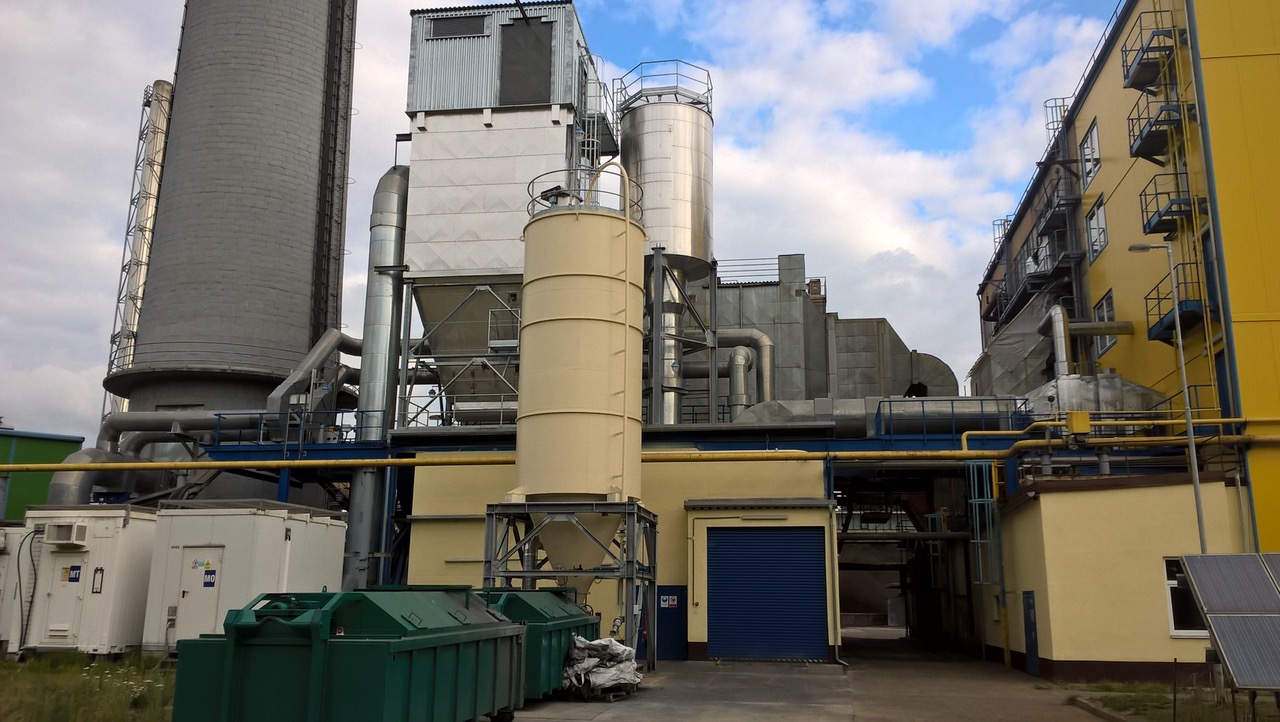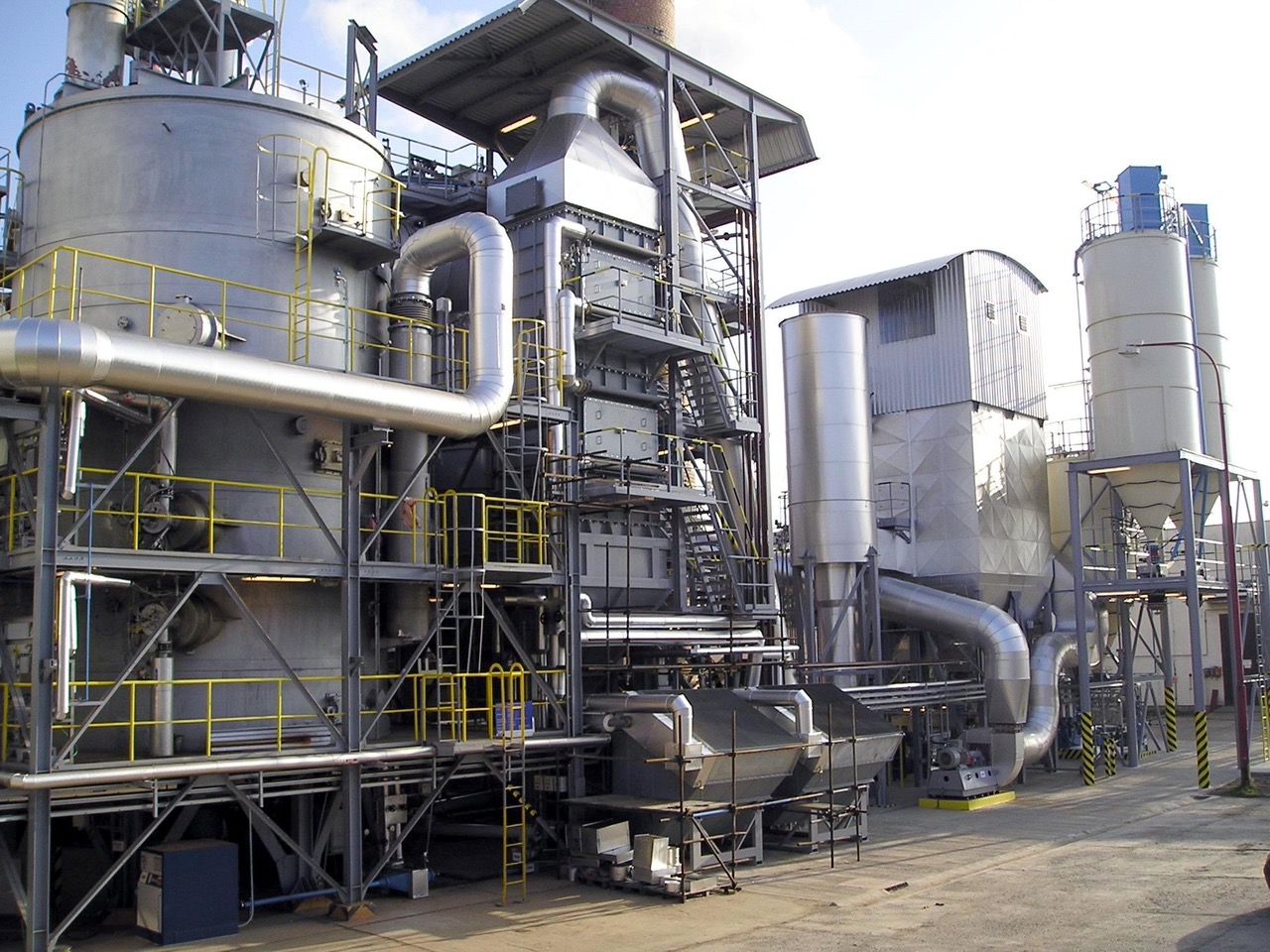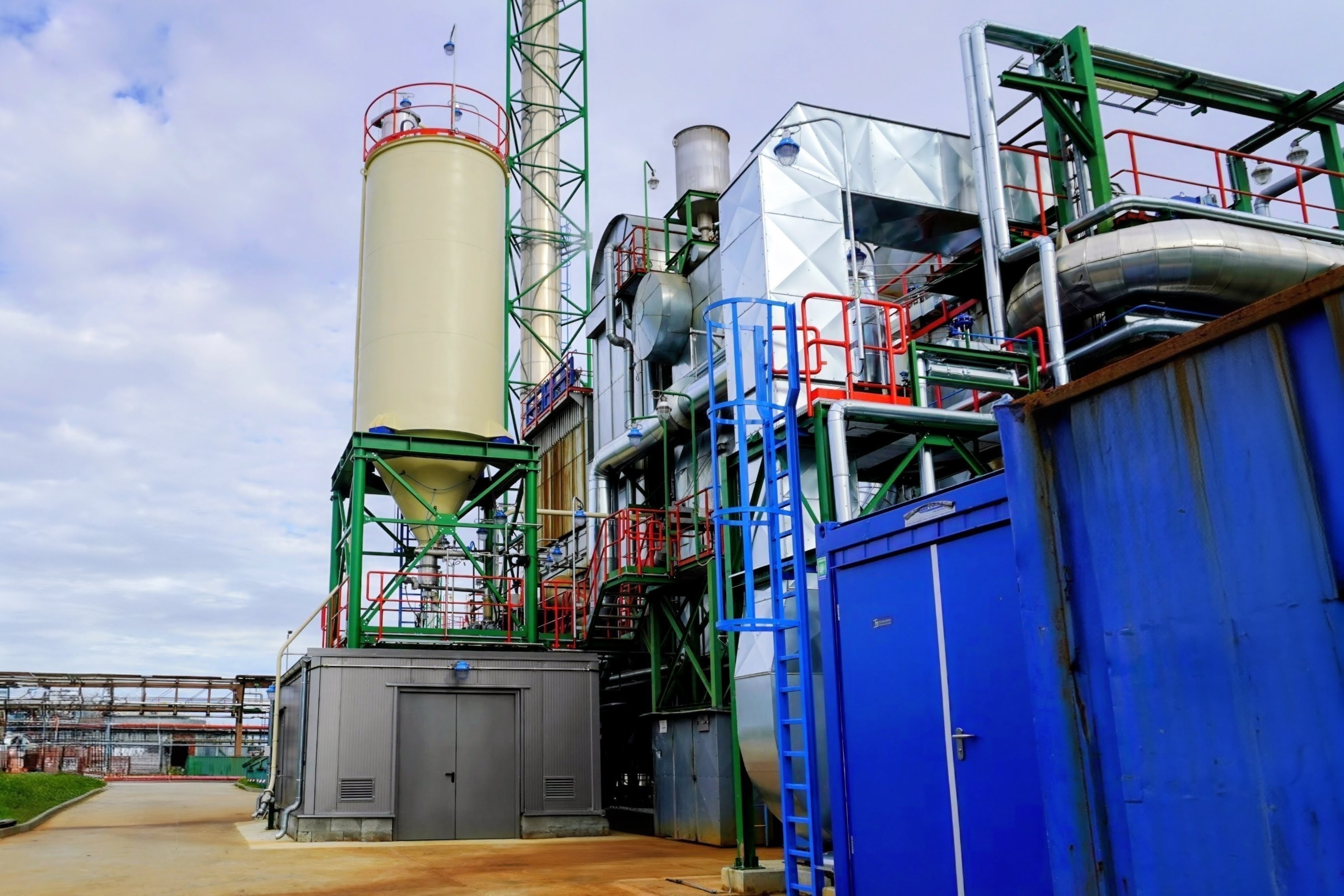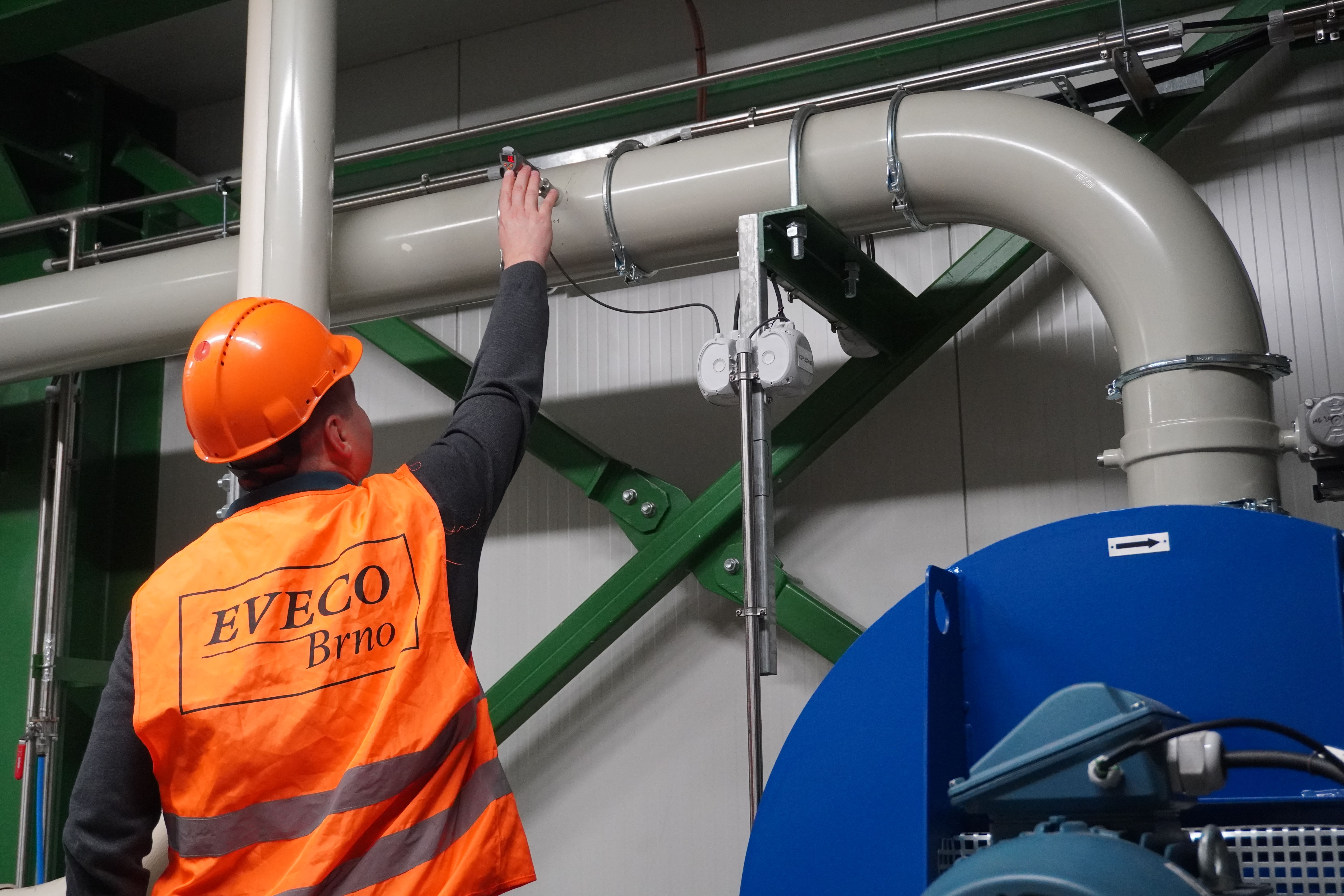Today, we are talking about a complex part of the equipment that is technologically just as important as combustion or heat and electricity production itself. And with advancing legislation, its role is becoming even more prominent.
What used to be just "desulfurization and fly ash separation" is now an integrated system with reagent dosing control, multi-stage separation of dust and gaseous components, measurement, evaluation, and subsequent reporting. Today, flue gas cleaning is not just about meeting limits – it is a prerequisite for the long-term and safe operation of the equipment.
Facility for energy utilization of waste as a development hub
Today, waste-to-energy plants can be considered the most comprehensive sources in terms of flue gas cleaning.
"Incinerators face the strictest emission limits and the highest operational variability. The fuel is uneven, the load changes over time, and operation must be stable for 8,000 or more hours per year. All this while monitoring a wide range of substances – from nitrogen oxides, sulfur dioxide, dust particles, and acid gases to dioxins, heavy metals, and organic pollutants," describes Tomáš Krejčí, CEO of EVECO Brno.
In practice, this means that a single device must handle several technological steps at once – dosing sorbents, separating solid substances, neutralizing acid gases, filtering dioxins, denitrification, all in a precise sequence, with regulation and control.

It is on these devices that the EVECO Brno and ORGREZ teams from the ORGREZ Group have gained the most practical experience that can be passed on. Incinerators today represent the technological pinnacle of the industry, but their principles – in particular the interaction of individual stages, parameter control, and long-term efficiency management – are also very well suited to smaller, more conventional sources.
What is no longer sufficient in biomass sources today
Many biomass boiler rooms in the Czech Republic were designed at a time when an electrostatic precipitator and a simple sorption stage were sufficient. However, with increasing demands on separation efficiency and, above all, stricter parameters for operational stability and related technologies, these solutions are now proving to be inadequate.
"Electrostatic precipitators very often fail to capture fine dust and residual substances, which then penetrate the denitrification stages and significantly shorten the service life of the catalysts," explains Tomáš Krejčí.
In the biomass sector, the concentration of sulfur oxides is relatively low, which is why their impact is sometimes underestimated. "However, it is not only the emission limit that is decisive for SCR technology, but also the concentration in the syngas or flue gas, which affects the catalytic layer. Catalyst sulfation, even at SO₂ concentrations well below legislative limits, can significantly reduce the efficiency of the entire system and result in unplanned operating expenses," adds Vojtěch Vavřička, Director of the ORGREZ Environmental Systems Division.

Therefore, in such cases, it is necessary to reconstruct the entire solution. Instead of an electrostatic precipitator, EVECO experts recommend installing a fabric filter with the option of dosing reactive sorbents.
"Before SCR, we typically include a stage for pre-cleaning flue gases from acidic components, typically based on sodium bicarbonate or calcium hydroxide. However, if this is not possible, e.g., due to space constraints or the existing technical solution of the boiler, SCR in a high-dust design can also be applied here. ORGREZ has unique experience in this field with a functional reference as the only company in the Czech Republic, and we dare say also in Central and Eastern Europe," explains Vojtěch Vavřička.
In smaller capacities, or where operating modes do not allow the use of SCR, ORGREZ experts implement SNCR technology. In many cases, they also supplement the system with heat recovery from flue gases – not only to increase efficiency, but also to optimize temperature conditions for subsequent stages.
Cogeneration: small sources, but not without problems
In the case of cogeneration units, it may be misleading to think that they are technologically simple, undemanding sources. However, the reality is different. Strict limits on NOₓ, CO, and formaldehyde apply today, especially in the case of gas-fired units burning biogas or natural gas. At the same time, space is often limited in these facilities, operation is variable, and the demands for ease of use are high.
A realistic solution in practice is to use compact SCR systems, which are often supplied in modular or container designs, with fully automated control and connection to operational SCADA systems. The system must be robust, but at the same time sensitive enough to maintain efficiency during frequent start-ups and shutdowns.
"We design such systems in close cooperation with experts from the Environmental Systems Division of our sister company ORGREZ, who specialize in denitrification optimization, including measurement, commissioning, and warranty provision. This cooperation is crucial today – it allows us not only to comply with emission limits, but above all to maintain long-term operational stability," says Tomáš Krejčí, CEO of EVECO Brno, describing the cooperation within the group.
Combined cycle power plants: a special case with high demands
Combined cycle power plants are characterized by high efficiency, but also by very specific conditions in terms of flue gas temperature, which can exceed the limits for conventional catalysts. In these applications, the ORGREZ Group uses high-temperature SCR reactors with appropriate catalysts and precise reagent dosing control. Here, thorough coordination with the operating modes of the turbine and HRSG boiler is necessary, as load changes affect not only the composition but also the volume flows and temperature profile of the flue gas. The design of such systems cannot be separated from the overall energy balance, control strategy, and operational needs of the facility.
"Another factor besides the SCR reactor is CO emissions. Both in OCGT and CCGT. There are several ways to arrange the catalytic layers that can be applied to individual cases, so each DeNOx or DeCO technology is tailor-made," adds Vojtěch Vavřička.
Industry, VOCs, and the role of chemical plants
In addition to conventional energy, the importance of applications in the chemical industry is growing, where volatile organic compounds and nitrogen oxides are primarily addressed. Significant loads come from technological reactors, dryers, or storage and evaporation processes.
"In these cases, we implement thermal or recuperative oxidizers (RTO, RCO), which enable the effective destruction of VOCs even under variable loads. This is often followed by SNCR or SCR at the outlet, depending on the specific temperature profile and NOₓ requirements," explains Tomáš Krejčí.
The advantage of these applications is the ability to integrate waste heat back into the production process. At first glance, these systems are not as visible as a boiler or turbine, but in terms of control complexity, diagnostics, and operational significance, they are just as important.

What does this imply?
From the perspective of design, operation, and future legislation, it is clear that flue gas cleaning can no longer be considered a marginal technology. The biggest mistake today is to rely on the assumption that "the existing system will still pass." Many operations are operating on the edge—whether in terms of limits or in terms of the costs they incur for reagents, maintenance, and component replacements.
"Last but not least, ORGREZ operates the most extensive emission measurement network in the Czech Republic. This live data is then processed in accordance with legislation. We use the EisNet system for this, which not only provides outputs from emission measurements, but also contains information on reagent consumption, wastewater quantities, fly ash, etc.," says Vojtěch Vavřička, introducing another of the services.
SW EisNet is fully compatible with the API required by legislation and is a comprehensive tool for operators of power plants, heating plants, and industrial facilities, which makes it easier for clients to fulfill their reporting and record-keeping obligations to the authorities, fully automatically, 24/7/365.
"Data from CEMS can be further utilized so that it does not end up in a data graveyard. If the client is interested, we can use it in our data excellence center for subsequent optimization of industrial and heating plant operations," adds Vavřička.
Experience shows that an effective system must be designed comprehensively—not only according to a table of limits, but also taking into account the entire technological link, the chemical composition of flue gases, operating modes, costs, and service. It is important to design a system with the possibility of expansion, with an overview of legislative developments and a realistic view of operational reality.
Today, flue gas cleaning technology determines whether a source will be competitive, economically sustainable, and legally compliant – not only in 2025, but also in 2030 and beyond.
Published on the O energetice website.

